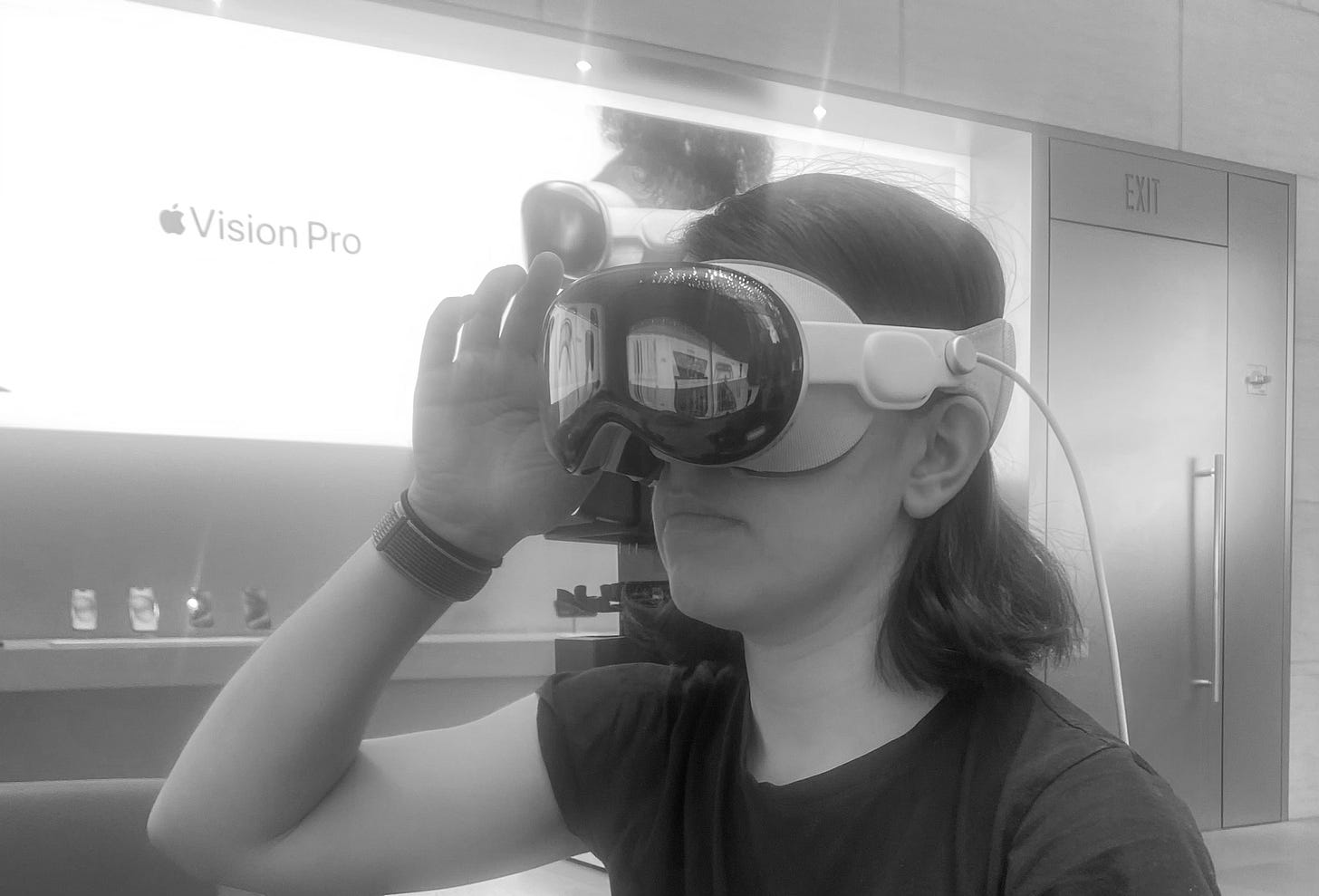Working in augmented reality
The Apple Vision Pro is not yet commercially available in the UK. I took the opportunity to trial it while here in the US. This is my take on how I see it working.
All things display
The screen mileage and ability to have so many large windows open in my visual field was great. Looking across at different windows also seemed more fluid than on my usual desk set up. On the other hand, the text resolution across windows was not consistent. You can bring your MacBook screen into the augmented reality (AR) workspace, which also helps as a workaround as the applications currently available on the Vision Pro are limited. I found the immersive environments surprisingly effective at blocking out the outside world, which helped with focus. Outside of the work use case, the entertainment demos and spacial videos were really captivating.
Data input
This was the immediately obvious practical limitation for anyone using a keyboard lots at work. The virtual keyboard is not really suitable for touch typing or keyboard shortcuts. The best option is probably to connect a Magic Keyboard but this brings you out of the AR environment so doesn’t feel seamless. I increasingly use dictation for data input, so the keyboard issues may be less of a limiting factor day to day.
The future
The concept of being able to set up and work from anywhere with a large display without carrying heavy hardware around or needing the office space felt liberating. But the location flexibility the Apple Vision Pro brings is ironic given the easiest option is to just block out the noise and set up to work from the moon without leaving home at all. The digital persona avatars are still in beta but are fairly realistic and indicate a future where we could broadcast ourselves into each other’s virtual/ augmented reality workspaces without even having to turn on our camera at home!
The way we connect at work is changing and the Apple Vision Pro definitely demonstrates the potential to create and bring people together in virtual spaces. However, there is a serious risk that this will push humans away from each other in the real world and instead propel us into working in isolated realities, disconnected from what is actually going on around us, in the workplace and beyond.
Technology undoubtably enables progress and efficiency in the workplace. But if it is not implemented strategically, it may come at psychosocial cost for individual and organisational health. This comes in many forms, from workplace relationships and support having a bearing on work-related stress to employees having a transactional approach to their role, to the productivity downsides of not being able to switch off and the blurred boundaries between work and home life.
Forward thinking organisations must reflect on the value of human to human in person interaction to their mission whenever they adopt new technology and build policies around ways of working. On an individual level, we each need to develop insight into the impact of our use of technologies at work- what actually helps with productivity…and at what cost.



